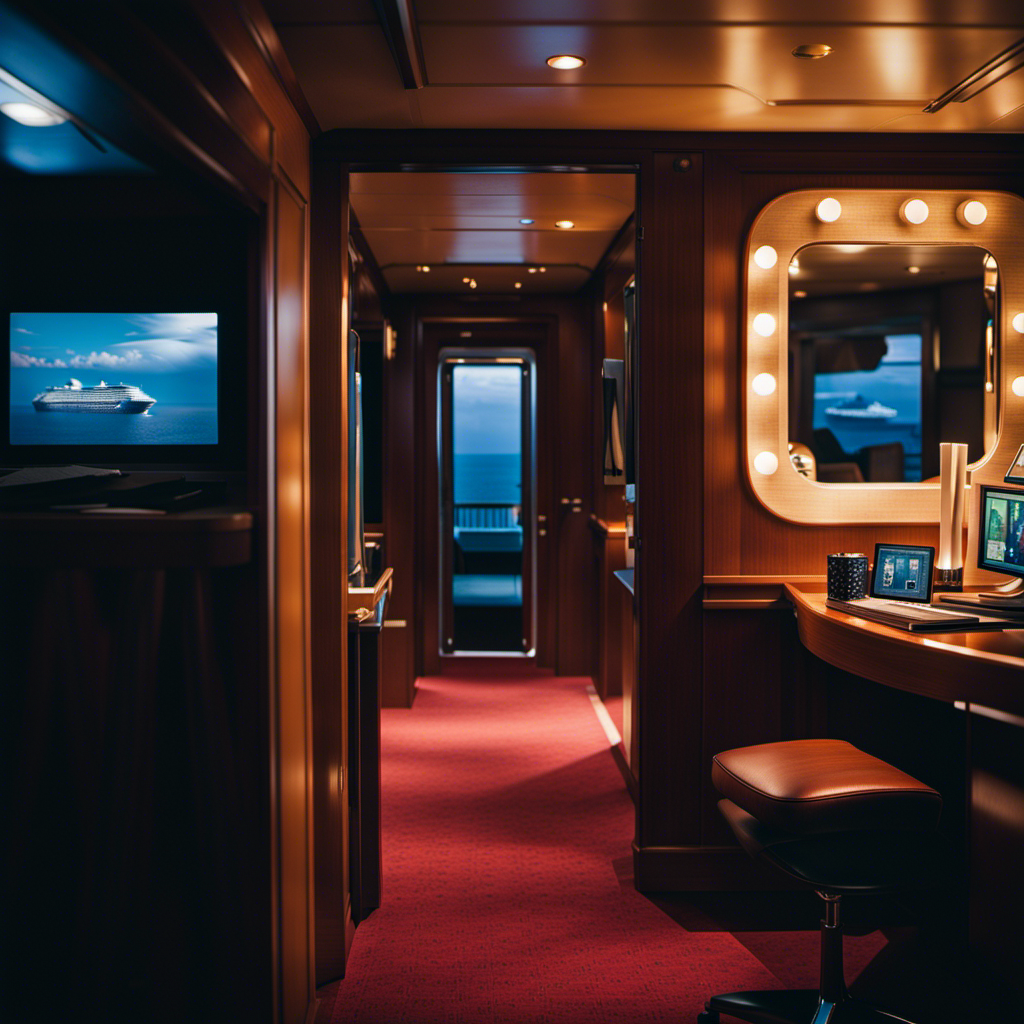Hello! Welcome to the ultimate guide on cruise ship cabin stewards. Allow me to lead you through the fascinating world of these dedicated professionals.
Picture this: you step into your immaculate cabin, greeted by soft, freshly made beds and a towel animal that brings a smile to your face. Behind this seamless experience is the diligent work of cabin attendants, like myself, who ensure your comfort throughout your voyage.
In this guide, we’ll explore the responsibilities and duties that come with being a cabin attendant. From maintaining cleanliness and tidiness to delivering documents and engaging in friendly conversations, we do it all to create a memorable experience for you.
We’ll also dive into the world of tipping and gratuities, revealing how these extra gestures of appreciation are shared among the crew.
So, sit back, relax, and let me show you the ropes of the cruise ship cabin attendant life. Together, we’ll uncover the secrets behind providing exceptional service while sailing the high seas.
Key Takeaways
- Cabin attendants are responsible for keeping cabins clean and tidy throughout the cruise, including tasks like refreshing towels, making beds, emptying trash, and creating towel animals.
- Cabin service frequency varies depending on the cruise line, with once per day service for some lines and twice-daily service for premium lines.
- Cabin attendants are not responsible for tasks like onboard account inquiries, shore excursion bookings, childcare services, or unpacking/packing belongings.
- Tipping is not included in the base fare and is typically prepaid or added to the onboard account. Extra cash tips are common, and small gifts like chocolates are appreciated.
Responsibilities and Duties
As a cabin attendant on a cruise ship, my main responsibilities include keeping the cabins clean and tidy throughout the cruise, refreshing towels, making beds, emptying trash, delivering documents, and creating towel animals.
In order to excel in this role, I must possess certain training requirements and customer service skills.
To become a cabin attendant, I underwent thorough training that included familiarizing myself with the ship’s layout, learning proper cleaning techniques, and understanding the importance of attention to detail. Additionally, I received training on how to provide exceptional customer service to ensure that guests have a memorable and enjoyable experience on board.
Customer service skills are crucial in this position as I am constantly interacting with guests. I must be friendly, approachable, and capable of addressing any concerns or requests that guests may have. It is my responsibility to ensure that their needs are met and that they feel comfortable and satisfied throughout their stay.
In summary, as a cabin attendant, I take pride in maintaining the cleanliness and comfort of the cabins while providing excellent customer service to enhance the overall cruise experience for our guests.
Tipping and Gratuities
When it comes to tipping and gratuities, it’s important to remember that they are not included in the base fare and can be prepaid or added to the onboard account. Tipping etiquette varies by cruise line and stateroom category, but it is customary to show appreciation for the hard work and excellent service provided by cabin attendants. While daily gratuity rates vary, it is common to give extra cash tips of around $10 to $20 per day. Cabin attendants greatly appreciate these additional gestures of gratitude. In addition to cash, small gifts like chocolates are also a thoughtful way to show appreciation. It’s important to note that gratuities are divided among the crew members, including cabin attendants, so your tip directly impacts their income. By recognizing the efforts of cabin attendants through tipping, you not only acknowledge their hard work but also contribute to their overall well-being and job satisfaction.
| Tipping Etiquette | Extra Cash Tips |
|---|---|
| Show appreciation for excellent service | $10 to $20 per day |
| Cash tips are common | Small gifts like chocolates |
| Impact cabin attendants’ income |
Contract and Living Arrangements
Living onboard for the duration of the contract, I found that the limited time off and sharing living arrangements with fellow crew members created a unique sense of camaraderie and shared experiences.
The living conditions onboard the cruise ship were comfortable, with well-maintained cabins and access to amenities such as dining areas and recreational facilities. However, it’s important to note that the living space is typically compact, with limited personal storage.
As for time off, while it may not be a full 24 hours, there are opportunities to explore ports of call and enjoy the ship’s amenities during scheduled breaks. It’s important to make the most of these moments and strike a balance between work and leisure.
Overall, the contract and living arrangements of a cruise ship cabin attendant offer a rewarding experience with opportunities for personal growth and lasting friendships.
Frequently Asked Questions
What qualifications or training does a cabin attendant on a cruise ship need to have?
To become a cabin attendant on a cruise ship, I had to meet certain qualifications and undergo training. This included having excellent communication and customer service skills, being physically fit, and completing a comprehensive training program on cleaning and guest service.
How do cabin attendants handle medical emergencies or guest complaints?
Handling medical emergencies is a crucial part of my role as a cabin attendant. I follow protocol, contacting the ship’s medical team and providing assistance. Additionally, I am trained to handle guest complaints effectively, addressing concerns and finding solutions to ensure a pleasant cruise experience.
Are there any specific rules or guidelines that cabin attendants need to follow while on duty?
As a cabin attendant, I follow specific rules and guidelines while on duty. This includes maintaining cleanliness, respecting guests’ privacy, and providing personalized service. I adhere to proper etiquette by being professional, friendly, and attentive to guests’ needs.
What are some common challenges or difficult situations that cabin attendants may encounter?
What challenges do cabin attendants face? From dealing with medical emergencies and guest complaints to navigating language barriers and communication issues, cabin attendants must be prepared to handle a variety of difficult situations.
How do cabin attendants handle language barriers or communication issues with guests from different countries?
Handling language barriers and communication issues with guests from different countries requires cultural understanding. As a cabin attendant, I utilize gestures, visual aids, and translation apps to ensure effective communication and provide a comfortable experience for all guests.










